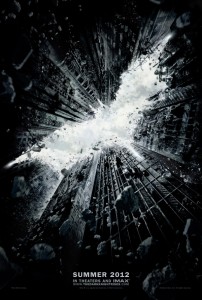To write effectively it’s important to structure your work process. The progress of your writing project needs structure just as much as your story does.
Here is a four-stage model of how you can structure and plan the writing of a screenplay. The thoughts here are based on the things we have learned and experienced in writing our first three scripts, Nidarholm, Vinland and Haugtussa.
First Phase: Research And Development
You choose a project from your idea bank and do a brainstorming session to find where the possible stories lie. For example, when we started our second screenplay we chose to write about the norse discovery of America. With the topic chosen, we started to map out the many different ways we could tell this story. We were both most drawn to telling the saga of the man that lead the first viking expedition to the new world, Leiv Eirikson.
After you’ve chosen your story subject, your ready to start your research. Some projects, like stories based on historical events, require extensive reading and studying. Other stories may not need much research, for example an interpersonal chamber piece.
Make sure you have a good system for your background info and research. Set up a bibliography. Keep all relevant material in a folder, either hardcopy or on your computer.
Sometime during this process you’ll get ready to outline possible plots. Write a timeline. Develop a short synopsis. See how your plot fits into a three- or four-act structure.
The goal of this phase is to end up with a detailed synopsis or step-outline that enables you to start to write scenes — and to have done enough research to give you an overview of the story world and necessary background for the plot.
Second Phase: The First Draft
Following the plot from your synopsis or step outline, write a first draft of your screenplay. Use proper form and structure from the beginning. Write in Celtx or other solid screenwriting software, and save your work in the cloud, so you won’t risk losing your work in a harddrive crash.
Don’t stop. Don’t go back to change stuff. Avoid the urge to edit and nit-pick. Allow yourself to write clumsy and awkward scenes and dialogue. Just get the work done, from opening scene to fade out.
If possible, write your first draft in one quick burst, perhaps between four and seven working days. We call this The Muscle Draft, borrowing a phrase from Darren Aronofsky.
The goal of this phase is to end up with a fast and loose first draft that should be at least 50 pages, but no more than 120.
Third Phase: The Fat Draft
The first draft should be allowed to incubate for a month while you work on other projects. When you return to it, make a plan of all the things you need to do. You will have lots of new ideas, and a stronger sense of plot and characters than you had when you began writing the first draft.
Set up a time schedule with a detailed overview of the work you need to do. Give yourself two or three months to get it done.
Never erase or replace what you’ve already written — keep all your work. For a more detailed description of this technique, see this article about the fat draft.
After you’ve done everything on your list, you need two or three intensive sessions of editing, after which you end up with a readable second draft.
End the third phase by inviting a handful of actors to do a table reading of your second draft. Don’t participate in the reading, and avoid having a copy of the script in front of you. Just listen and take notes. After the reading you may invite the actors to give their thoughts and notes. Some notes can be helpful, but some may be harmful and wrong. Spot those bad ideas and ignore them.
Phase Four: The Final Draft
Again, let your screenplay rest for a month. When you pick it up again, aim to revise it one final time before you send it out to readers and filmmakers. It’s vital to complete projects in a timely fashion and move on to other projects. Don’t end up as one of those frustrated writers that are on their seventeenth draft and fourth year of a screenplay. Aim to write two or three screenplays every year. And finish them.
Set up a plan of all the revisions and adjustments you want to make. Work from the fat draft still — sometimes you will need to go back to former versions or earlier ideas. Give yourself one or two months to complete this work.
At the end of this period, go away somewhere for two or three solid days of editing, and return with a third and final draft of your screenplay. It may not feel finished, but I doubt any creative project ever does. Do not start to work on another draft — not unless you have a brilliant reason.
Export a pdf of your draft and send it to your readers. Don’t be coy or stingy, you want as many people as possible to read your work.

